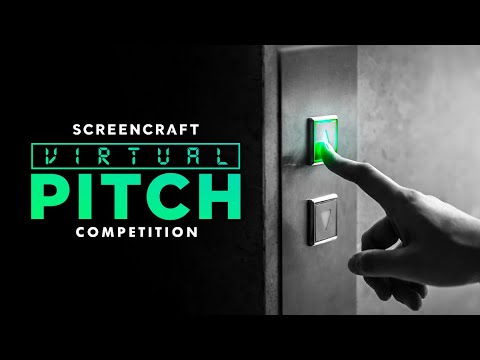When you hear the name Quentin Tarantino, images of blood-soaked heroes on a roaring rampage for revenge scored by music that truly feels epic is typically what comes to mind. The Tarantino style (known as Tarantinoesque) is unique to this filmmaker who knows how to tell an entertaining story. This distinct style starts on the page, typically with these distinct five Tarantino trademarks.
Quentin Tarantino Loves Title Cards
In Pulp Fiction, Tarantino’s use of non-linear storytelling helps to cover the multiple stories that overlap over the span of two days. To keep the story tight and clean, Tarantino separates the jump in perspective by using a title card with the character’s name on it to signify whose perspective we are in.
The inserts play into the story’s momentum, slowing the story down when it needs to take a breather, or playing into the grandiosity of an upcoming situation. He also uses title cards to introduce new characters, who they are, and how they are related to other characters.
In the Kill Bill films, Tarantino uses title cards to divide the epic story into chapters. While he wasn’t writing the next great American novel, he was, in a way, writing a masterful screenplay that could only be told through the momentum of a novel.
Read More: Timeless Screenwriting Wisdom From Quentin Tarantino
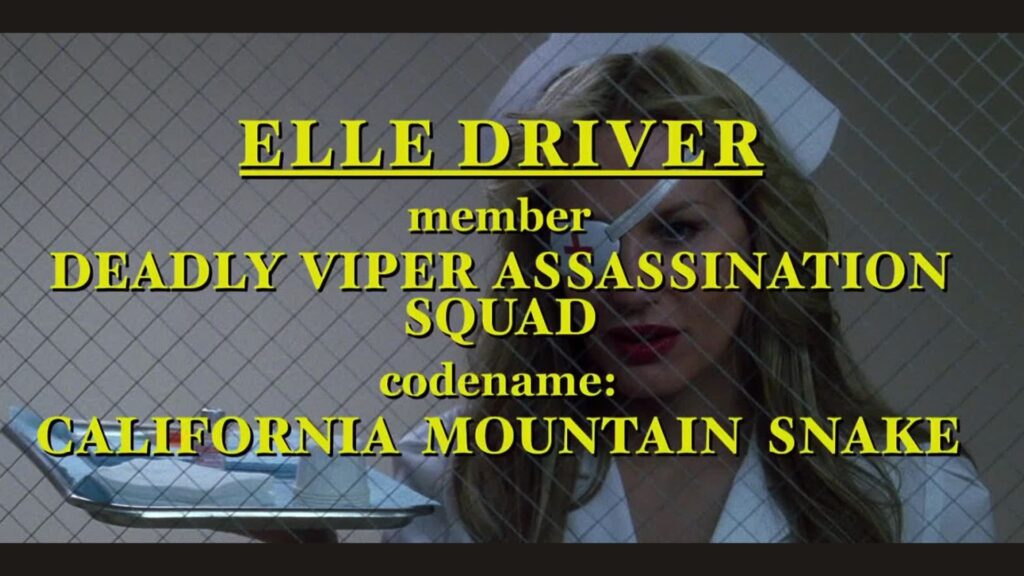
‘Kill Bill: Volume 1’
States Music Genre
Tarantino’s instantly memorable soundtracks help to set the tone and emotion of a scene through music. Specifically, Tarantino opens each of his films by setting the scene with a detailed genre of music that is playing as the credits roll over the first few shots. In his first screenplay, which is True Romance, Tarantino sets the scene by specifically telling the reader what song is playing.
Tarantino gives the reader more space to imagine with later scripts by defining the genre of the song rather than telling the reader what song should be playing. Tarantino sets the genre of the entire score in Reservoir Dogs by having the characters talk about what kind of music has been playing on the radio. Then, Tarantino has the radio be a source of the music throughout, allowing the audience to imagine the beat of the music underneath each scene.
In Jackie Brown, Tarantino sets the tone of the film by writing, “We hear the rhythm of funky seventies SOUL MUSIC.” The story, which pays homage to the Blaxploitation films of Pam Grier, understands how important soul music is to the genre of film. By stating exactly what type of music is playing, Tarantino immediately puts the reader into the genre of the story he is telling.
Read More: Top Ten Quentin Tarantino Interviews About Screenwriting
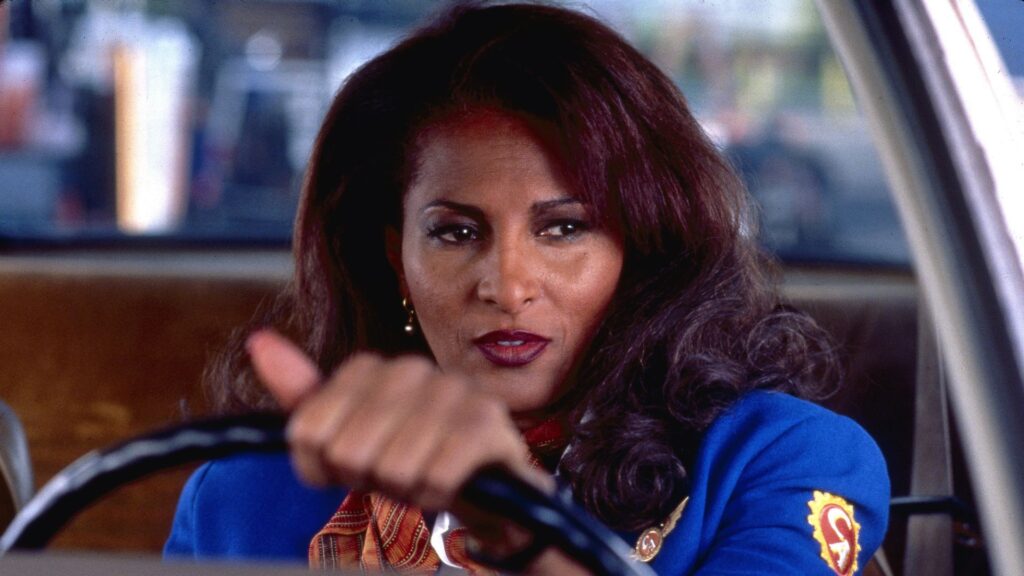
‘Jackie Brown’
Instant Cause and Effect
This is a bit technical and might not fully count as a trademark, but Tarantino is far too good at creating instant cause and effect, or plants and payoffs, that it has to be talked about.
When writing, it is smart to think of each scene as its only three-act story. There is always a set-up, conflict, and a resolution that leads a character onto their next “mission” or into the next act as they try to get what they want. Tarantino is great at having cause and effect, rewarding you for paying attention to each detail that ends up paying off in the end, typically with violence. But what Tarantino is the best at is instant cause and effect.
A great example of instant cause and effect is the opening scene of Django Unchained. The reader is introduced to the slave owners and the slaves they’ve just purchased. The reader meets Django, who is covered in scars and brands. Dr. Schultz (Christoph Waltz) comes into the scene, looking to purchase a former resident from the Carrucan Plantation. When the slave owners attempt to attack Dr. Schultz, he kills one immediately and severely injures the other in self-defense. There is immediate satisfaction there as the reader reads that two dim-witted villains of the scene are bested immediately.
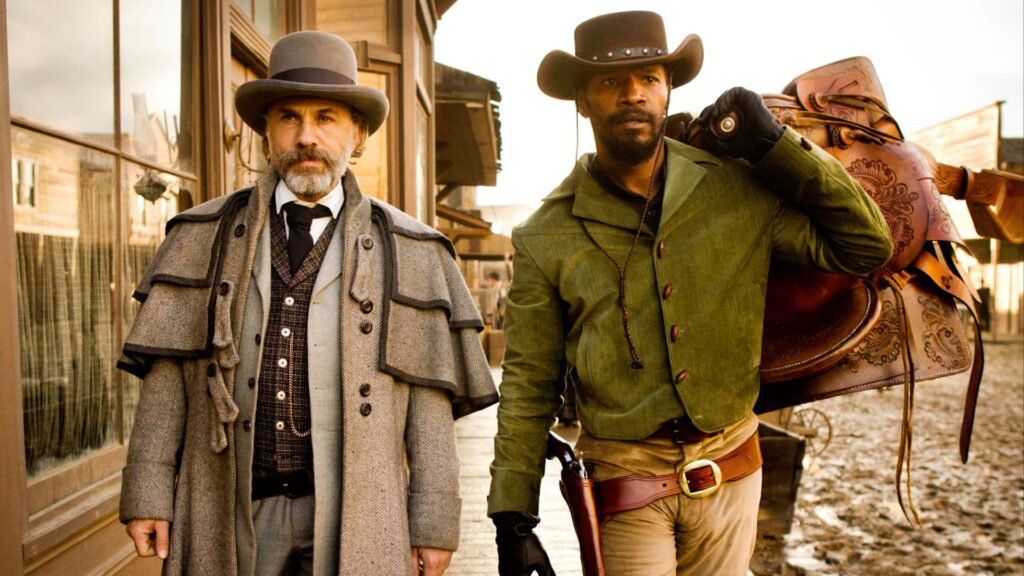
‘Django Unchained’
Tarantino’s Brilliantly Mundane Dialogue
This wouldn’t be a Tarantino breakdown if we didn’t talk about his use of dialogue. Tarantino films have copious amounts of dialogue. In any other film, too much dialogue is typically a death sentence to your story, but Tarantino has unlocked the power of mundane dialogue that doesn’t take away from the story.
This Tarantino trademark is used to create suspense, set up a future event, or hook the audience into the conversation. He can take a 10-page long conversation like at the opening of Reservoir Dogs or the almost 20 pages scene of Shoshanna (Mélanie Laurent) having lunch with Landa (Christoph Waltz) in Inglourious Basterds and keep the audience on the edge of the seat by wondering what will happen next as he builds character through interesting line deliveries or actions.
How does he do this so effortlessly? Tarantino often puts a bunch of people in a room, gives them a secret, and makes them all want to kill each other but not before discovering the other’s secrets.
Read More: Quentin Tarantino’s Top 10 Rules For Screenwriting Success
Cineliterate References
In a 1994 interview with Empire magazine (via Epigram), Tarantino said, “I steal from every single movie ever made. Great artists steal. They don’t do homages.” Tarantino’s visual references take from pop culture and popular postmodern cinema, while each of his films is a tribute to a specific genre and movement in cinema.
It is interesting to see how he points out these visual references in his screenplays. Often, Tarantino will use music to describe the genre of the film at the beginning of the film. Other times, Tarantino will lean on a trope to describe characters. In Death Proof, he gives his main character, Jungle Julia, the title of “final girl” as he is describing her, which also alludes to a common trope in the Exploitation genre that he is playing in for the film.
While it is a better practice to find creative ways to tell your story, leaning on tropes can help the reader visualize a moment faster so you don’t lose the pacing of your story. Remember, Tarantino is relying on tropes, but he finds new ways to bring very specific film/genre tropes into his screenplays.
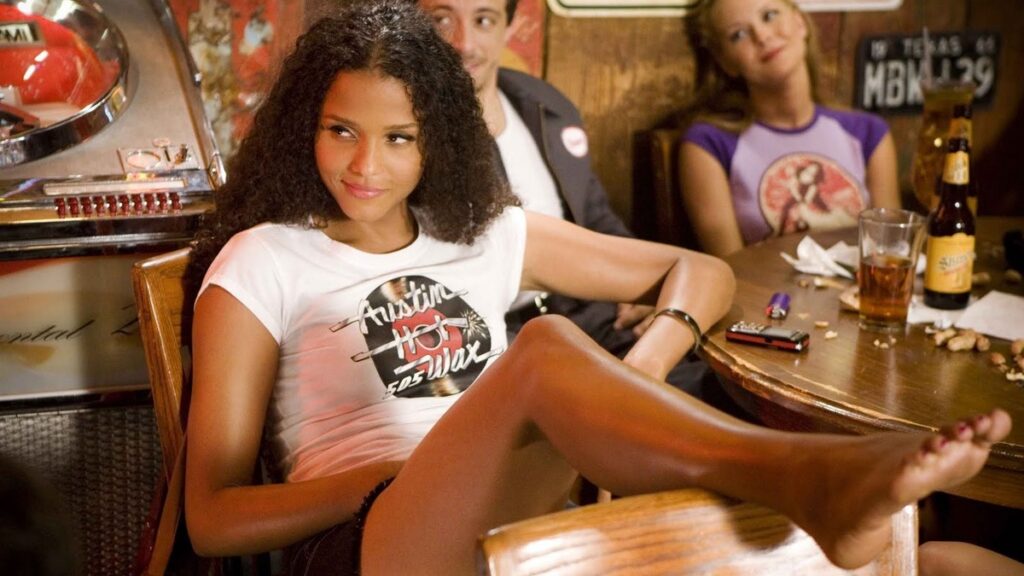
‘Death Proof’
—
Tarantino is a modern master of cinema, and it all starts with his screenplays. With his nine of ten iconic films making a profound impact on the history of cinema, inspiring generations of filmmakers and cinephiles to study that vast history of the craft, Tarantino is a storyteller who has defined his style that isn’t difficult to learn from.
When you are writing your next screenplay, try to use one or all the five Tarantino trademarks found in his scripts to build a stronger visual world that transports your readers and keeps them hooked until the end.
CHECK OUT OUR PREPARATION NOTES SO YOU START YOUR STORY OFF ON THE RIGHT TRACK!
The post 5 Trademarks of Quentin Tarantino Movies appeared first on ScreenCraft.
Go to Source
Author: Alyssa Miller



